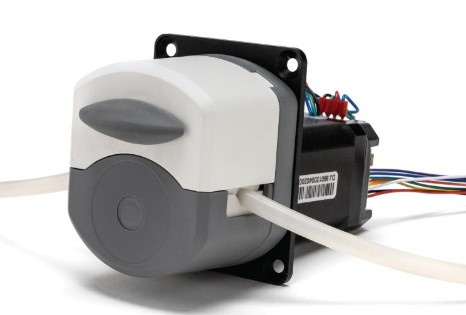Hose pumps have been used for decades in various industrial applications due to their versatility and unique design. The primary advantage of a peristaltic pump is that it can handle a wide range of fluid types and viscosities, making them ideal for many applications.
Easy Maintenance
One of the most significant advantages of hose pumps is their ease of maintenance. Unlike other types of pumps that require regular cleaning and maintenance, hose pumps are designed to minimize the need for maintenance. This makes it possible to minimize downtime and maintain high productivity levels, even in the harshest industrial environments.
Ability to Handle a Wide Range of Fluids
Another advantage of hose pumps is their ability to handle a wide range of fluids. Hose pumps can handle the job if you transfer water, chemicals, corrosive liquids, or even food and beverage products. This versatility is due to the pump’s unique design, which uses a flexible hose or tube to transfer the fluid from one end of the pump to the other. The tube or hose is made from a material resistant to the specific type of fluid being pumped, ensuring that the fluid is not contaminated or damaged.
Consistent and Accurate Flow
Hose pumps are also known for their consistent and accurate flow rate. This is because the pump operates on the principle of peristalsis, which is the rhythmic contraction and relaxation of the pump’s tube or hose. This action creates a consistent fluid flow through the pump, regardless of the fluid’s viscosity or temperature. This makes hose pumps ideal for applications where accuracy and consistency are critical, such as in laboratory settings or the food and beverage industry.
No Contamination of the Fluid
Another benefit of hose pumps is that they do not contaminate the transferred fluid. Since the fluid only comes into contact with the pump’s tube or hose, there is no risk of contamination from other parts of the pump. This makes hose pumps ideal for applications where cleanliness and purity are essential, such as in the pharmaceutical or food and beverage industries.
No Dead Volumes
Hose pumps also have no dead volumes, meaning there is no portion of the pump where fluid can become trapped and not be transferred. This is an advantage over other types of pumps that can have dead volumes, which can result in loss of fluid or contamination. The absence of dead volumes in hose pumps helps to ensure that the fluid is transferred efficiently and effectively, with minimal waste.
Energy Efficient
In addition to being easy to use and install, hose pumps are also very energy efficient. This is because the pumping action is generated by the movement of the flexible tube or hose, which requires less energy than other types of pumps that use gears or rotors. This makes hose pumps a cost-effective solution for applications where energy efficiency is a concern, such as in large-scale operations where energy costs can add up quickly.
Summing Up
Hose pumps are a versatile and reliable solution for many different industrial applications. With their ease of maintenance, ability to handle a wide range of fluids, consistent and accurate flow rate, no contamination of the fluid, no dead volumes, ease to use and install, energy efficiency, quiet operation, and long service life, peristaltic pumps are an excellent choice for fluid transfer in many industries. Whether you need to transfer water, chemicals, or food and beverage products, hose pumps are an effective and cost-efficient solution that can provide reliable and long-lasting performance.
